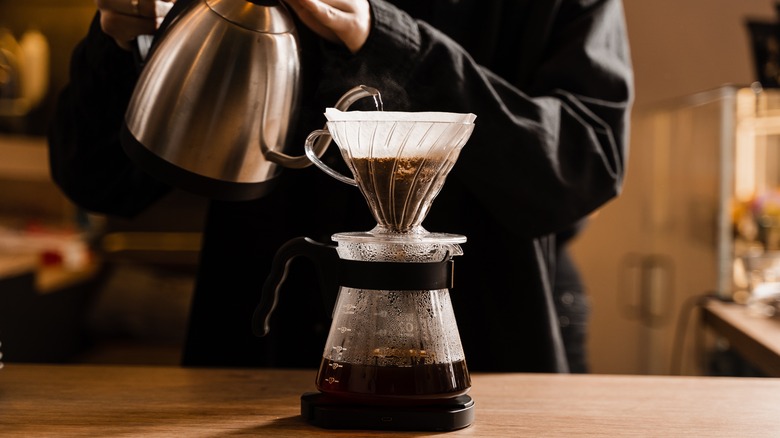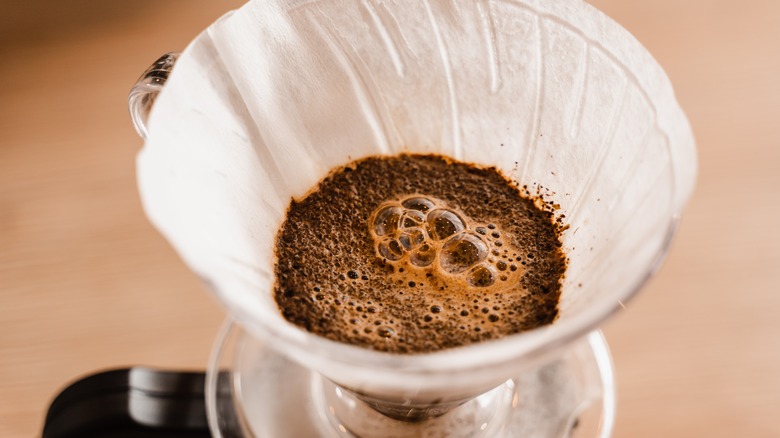The Right Equipment Is The Key To Perfect Pour Over Coffee
While the bare bones set-up of pour over coffee may seem like the simplest way in the world to make a cup of joe, it actually requires some real attention to detail. Just throwing a filter in the cone and haphazardly dumping hot water over the top will probably produce something seriously disappointing. In fact, ex-barrista Matt Woodburn-Simmonds (from Home Coffee Expert) has called pour over "the hardest coffee brewing method to nail." As he told Food Republic, "So many things can go a little wrong and just knock the final balance out."
But with the right equipment, you can perfect great pour over coffee in no time and avoid making a trek out of your house for burnt tasting Starbucks coffee. There are essential tools to use with pour over because "fine margins are important" for this brewing method, per Woodburn-Simmonds. His list of imperatives includes a temperature-controlled gooseneck kettle, coffee scale, and grinder. For many brewing methods, a good-quality grinder and coffee scale are key, but the gooseneck kettle is particularly important for the pour over style. The thin, hook-shaped spout allows the brewer to pour a controlled amount of hot water precisely, evenly, and slowly. A product that allows you to heat the water to an exact temperature also ensures that you will not accidentally scald your coffee grounds.
How to make a perfect cup of pour over coffee
The best coffee grinder setting for pour over coffee is one that ranges from medium to medium-fine — with a similar consistency to table salt or sand. It is also important to heat your kettle to between 195 and 202 degrees Fahrenheit, and the ground coffee and water should be measured by weight in a ratio of 16-to-1. To start, you'll want to place your coffee filter in the cone, rinse it with hot water, and discard any water that drips through into the cup below. Otherwise, the filter "can give a slight taste to the coffee if you don't rinse it first," said coffee expert Matt Woodburn-Simmonds.
After you rinse the filter, then put your ground coffee inside; for accuracy, measure the coffee and water by placing the whole setup on top of the scale. Woodburn-Simmonds also advised to start by pouring enough water to just cover the grounds, and let sit it all for about 30 seconds, allowing some of the gasses to escape in a process called blooming. "Then add around half the total water, pouring mostly in the [center] in concentric circles and only hitting the edges to keep them wet," he added. Before starting the final pour, wait about 10 seconds, but do not let the grounds dry out completely. Finish with the rest of the water, pouring it in the same manner described above.
"The whole process should take around three-and-a-half minutes," Woodburn-Simmonds said. While the procedure is definitely detailed, each step is actually very simple, and the reward of a perfectly brewed cup of robusta or arabica coffee will be well worth the effort.


